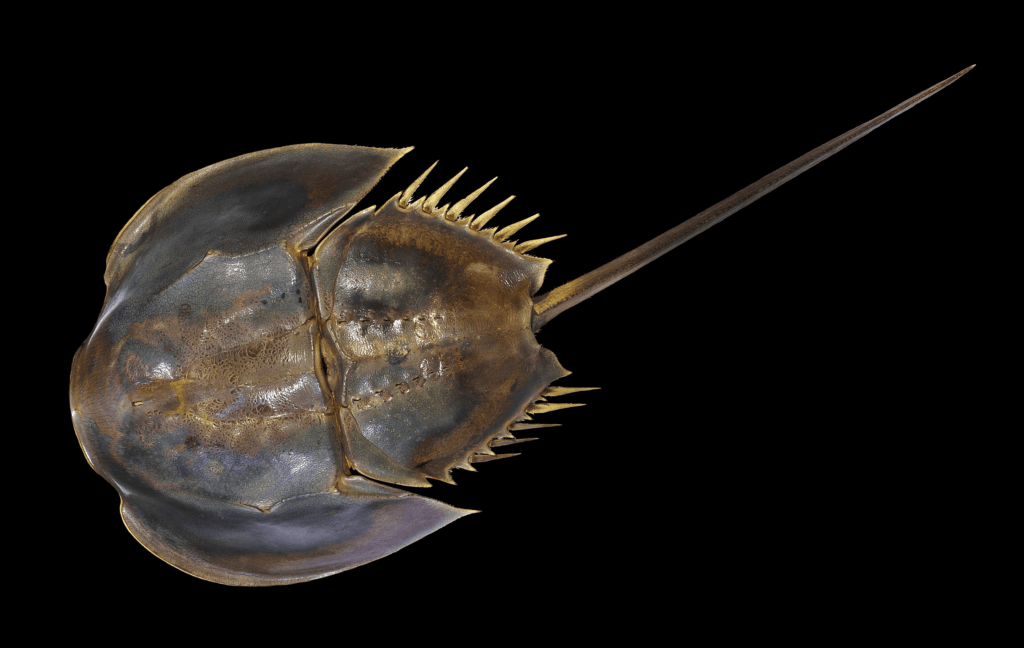Horseshoe Crab: A Unique and Endangered Marine Species, is fast vanishing along the Odisha coast.
Horseshoe Crab: Tachypleus tridentatus
IUCN status Endangered (IUCN 3.1)

The population of horseshoe crabs along the Odisha coast, one of the few places in India where the species is found, is declining due to unregulated fishing, raising concerns among conservationists. Two of the four global varieties of horseshoe crabs are located in Odisha, specifically along the northeast coast of Balasore and Kendrapara districts, where the crabs used to migrate in large numbers to breed.
However, the lack of awareness among local fishermen about the economic importance of horseshoe crabs and unregulated fishing activities along the coast are leading to the decline in their population. Although the crabs are known for their medicinal properties and are in high demand among biomedical companies, little effort is made by the government to conserve them.
Every year, many horseshoe crabs die after getting entangled in fishing nets. The presence of horseshoe crabs is now limited to specific areas like Balaramgadi, Chandipur beach, Khandia estuary of Balasore district, Eakakula, Madali, and Hukitola beach in Kendrapara district, whereas three decades back, they were found in large numbers across the coast.
The Association of Biodiversity and Conservation, with the help of Wildlife Trust of India (WTI), is involved in horseshoe crab conservation and research work in Odisha. Horseshoe crab blood contains a chemical that makes its blood clot in the presence of even the most minute trace of bacteria, and as a result, many biomedical companies worldwide use the crab’s blood to make vaccines.
The horseshoe crab is a fascinating and ancient marine species that has been around for over 450 million years. These crabs are not true crabs, but instead, they belong to the class of arthropods, which also includes spiders and scorpions. There are four species of horseshoe crabs found around the world, two of which are found along the north-east coast of Balasore and Kendrapara districts of Odisha, India.
The horseshoe crab’s appearance is unique and unlike any other marine creature. They have a hard, domed shell that is shaped like a horseshoe, which gives them their name. Their body is divided into three parts – the cephalothorax, abdomen, and tail. They have ten legs and two large compound eyes that are very sensitive to light.
One of the most unique features of horseshoe crabs is their blue blood. The blood contains a chemical called limulus amebocyte lysate (LAL), which is used to detect bacterial toxins in medical equipment, vaccines, and other pharmaceutical products. Due to their importance in the biomedical industry, horseshoe crabs are often harvested for their blood, which has led to their decline in population.
Unregulated fishing activities and lack of awareness about the economic importance of horseshoe crabs have also contributed to their population decline. Horseshoe crabs used to migrate in large numbers regularly to breed, but they now face the threat of getting entangled in fishing nets, leading to their death. In recent times, scientists have found hundreds of horseshoe crab carcasses along the Odisha coast, raising concern among conservationists.
The horseshoe crab plays an important role in the marine ecosystem, and their decline could have severe consequences. They are often referred to as “living fossils” because of their ancient lineage and are considered a keystone species in the ecosystem. They are a primary food source for shorebirds, and their eggs provide essential nutrients to migratory birds, which rely on them during their long-distance travels.
Conservation efforts for horseshoe crabs in Odisha are limited, with little effort made by the government to protect this unique species. The Association of Bio-diversity and Conservation, with the help of Wildlife Trust of India (WTI), has been involved in horseshoe crab conservation and research work in the region. The government must take steps to regulate fishing activities and raise awareness about the economic and ecological importance of horseshoe crabs.
In conclusion, the horseshoe crab is a unique and ancient marine species that is in danger of extinction due to unregulated fishing activities, lack of awareness, and exploitation for their blood. Their population decline could have severe consequences for the marine ecosystem and migratory birds that rely on them for food. It is essential to protect this species and its habitat through conservation efforts and government intervention.